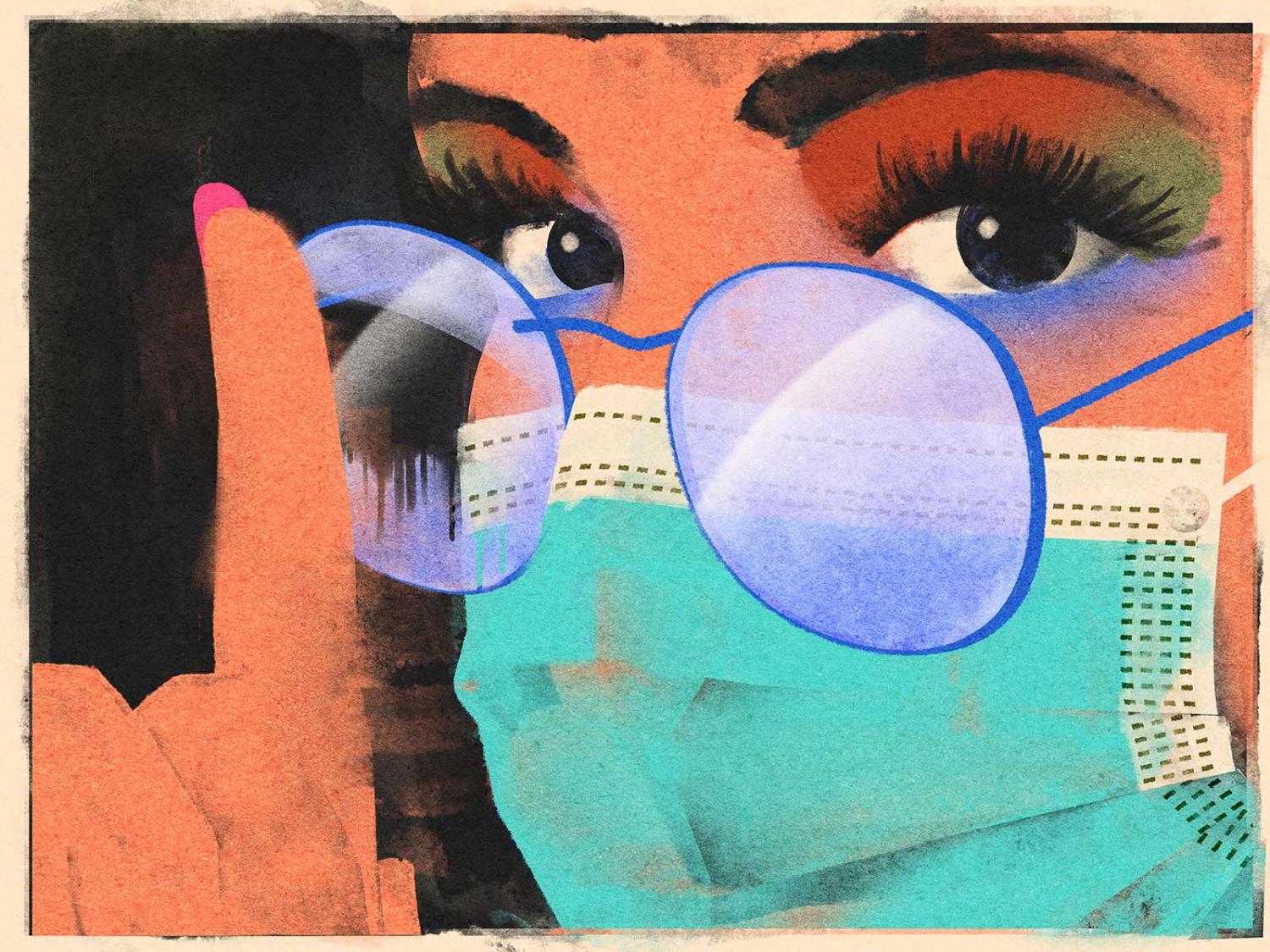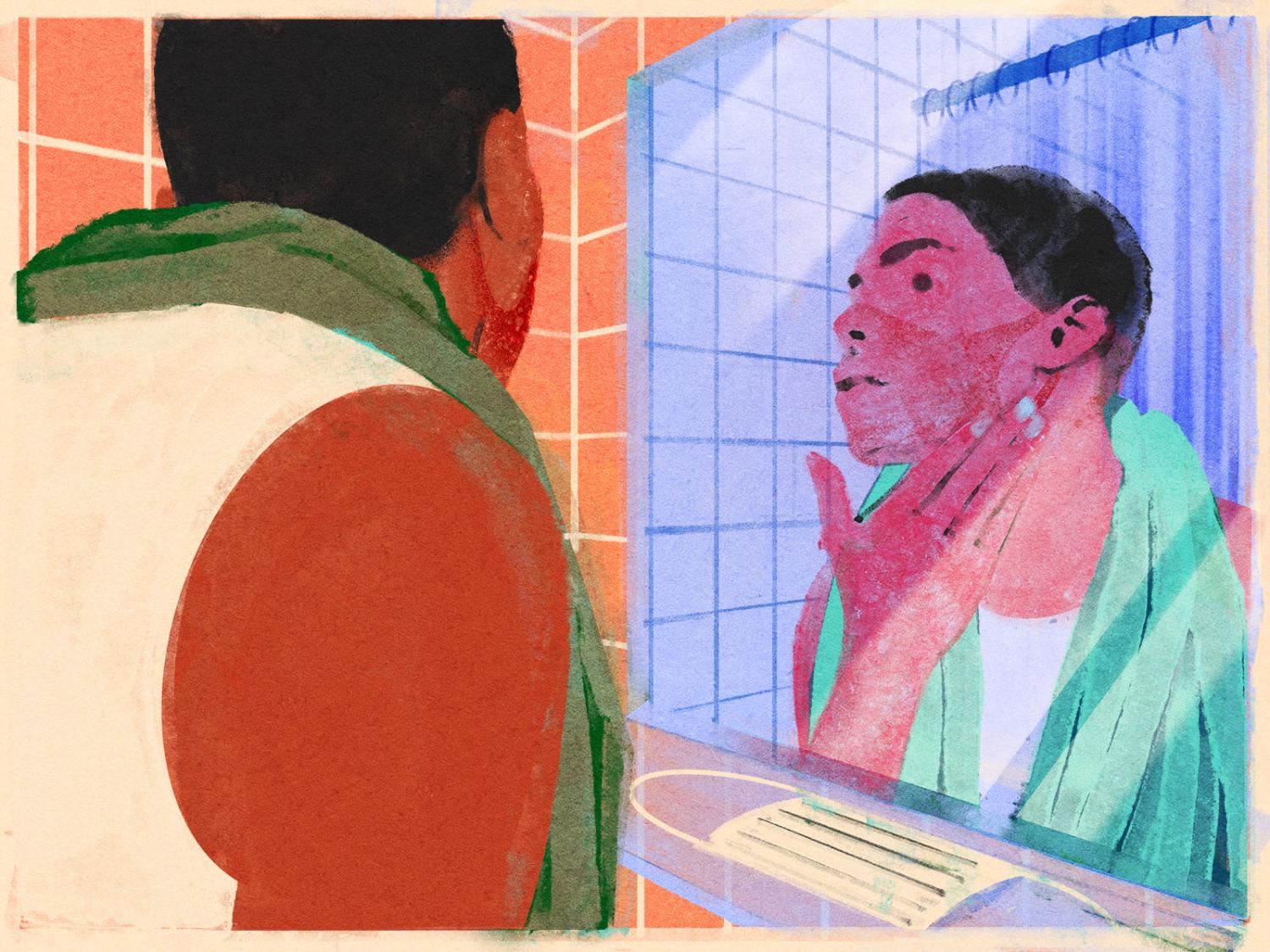How to get a comfortable face mask fit: top tips from Dyson experts
With masks now an essential part of our daily lives, we asked Dyson experts to share their top tips on how to achieve the perfect face mask fit.
September 21 2020

More than 50 countries around the world are mandating the usage of masks in at least some public areas, due to the Coronavirus pandemic. Whilst many across the world are accustomed to wearing a mask for most of the day, particularly in the West, it is a new habit millions of people must get to grips with. And quickly.
“Masks provide a simple barrier, preventing droplets from respiration from travelling through the air to other people, when coughing, sneezing, talking or shouting”, says Dyson Microbiologist, Karen Holeyman. “In the scientific world, it’s known as source control, and is being recommended by the CDC and WHO based on the current evidence suggesting that COVID-19 is transmitted via respiratory droplets.”
Whilst wearing masks remains a duty across the world to prevent the spread of the virus, there is no denying they can be frustrating and irritating when worn for the majority of the day – commuting on public transport, working in the office, in shops and other commercial spaces. Using their expertise in areas as diverse as microbiology, aerodynamics and skin research, Dyson engineers and scientists share their top tips for coping with wearing a face mask in the post-COVID era.
Fogged up glasses
“As a glasses wearer, the first frustration I experience when putting on a mask is the immediate condensation on the lenses,” says Jess Le Dinh, Engineering Lead. “Avoiding exhalation is really the only fool-proof way to stop your glasses fogging up entirely, but it’s obviously not a practical solution. But, it’s a simple matter of managing the airflow and there are other things you can do.”
On exhaling, warm breath travels upwards out of the top of the mask, particularly the space where masks fit imperfectly over the bridge of the nose. It hits the cold lens of the glasses, rapidly cooling down and forming condensation, steaming up the glasses. The slower you exhale, the less warm air hits the colder lens, meaning that condensation can be less obvious or frustrating. Equally, by exhaling through your mouth, the stream of exhaled air is generally less pressurised, escaping less rapidly up towards the glasses. The best solution is to ensure a tight fit over the bridge of the nose – look for those masks with a level of rigidity you can mould to your face – or use a skin-friendly medical tape to close the gap entirely.

Tiredness and headaches
Since masks became a hot topic, a number of reports have claimed they can cause a build-up of carbon dioxide in the breathing zone and reduce the concentration of oxygen in the blood and brain. Some suggest this can causes increased tiredness and even carbon dioxide poisoning. “There’s very little science to support this,” says Fred Nicolas, Research Scientist in Air Quality. “Masks are designed to be breathable and worn for hours at a time, and in fact, carbon dioxide molecules are tiny, and so are highly unlikely to be trapped by a breathable material.”
“However, anecdotally, it’s not unusual to experience increased headaches or a feeling of tiredness. Mentally, we are more aware of our breathing and it may feel more laborious than usual. Or we might find the stress on our ears and head from the mask causes greater tension and a headachy feeling."
Ensure you take regular breaks from wearing your mask and breathe as much outdoor air as you can during breaks outdoors to avoid breathing in stale air throughout the day. Finding a mask that works for you is also crucial – consider those that fasten around the back of the head or nape of the neck to avoid pressure on the ears.
Humidity build-up
With the increase in mask wearing, discussions on skin health and irritation is also on the rise. Many mask wearers report trapped sweat, breakouts and aggravation of existing skin conditions on the face. “Under your mask, you might experience a microclimate that's hotter and more humid than you're used to. In highly humid environments, bacteria can thrive which might increase the risk of skin issues like acne,” says Karen Holeyman.
Ill-fitting masks could be the culprit. “If the mask is too tight or too lose, you might spend more time touching your mask and your face, which may transfer bacteria. And in that humid environment under the mask, it would be better to avoid doing so,” advises Karen. Overly tight masks can also rub the skin, causing irritation and redness on sensitive skin. “Ensuring you take regular breaks from wearing a mask and maintain good skin hygiene can help to mitigate some of these risks, but ultimately it’s something we’ll need to adapt to for the foreseeable future.”

Press contacts
-
USA
Emails us at USPR@Dyson.com
1330 West Fulton Street, 5th Floor, Chicago IL, 60607
-
Social media
- Twitter: @dyson
- YouTube: youtube.com/dyson
- Facebook: facebook.com/dyson
- Instagram: @Dyson
- Instagram: @dysonbeauty
- LinkedIn: Dyson
- Pinterest: Dyson Technology
